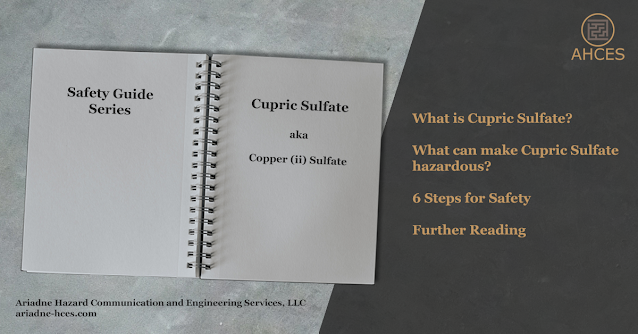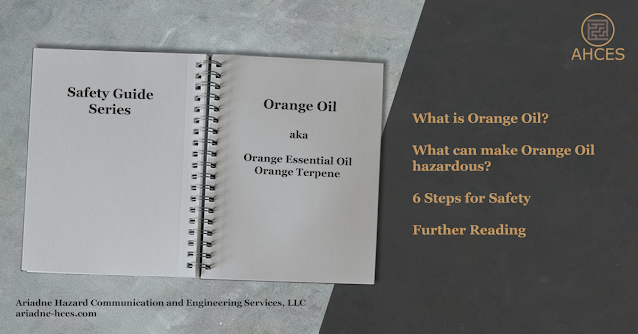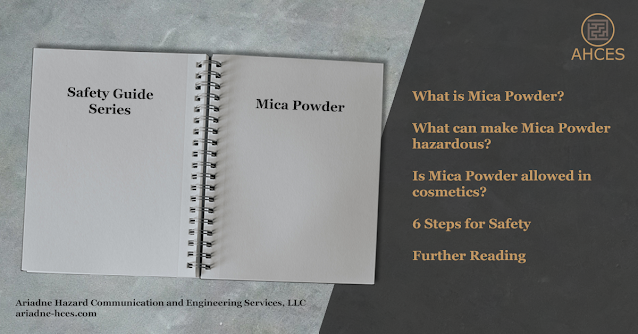Cupric Sulfate Safety Guide
What is Cupric Sulfate?
Cupric sulfate, also known as copper (ii) sulfate, is an inorganic crystalline substance.
Cupric sulfate has many uses, including as a fertilizer additive for copper depleted soils, an anti-algae herbicide, anti-fungal for aquarium fish, and as a mordant for the dying process. It is also found in laboratories as a component of Fehling’s solution and Benedict’s solution in testing for reducing sugars, and in Biuret Reagent in testing for proteins.
Since cupric sulfate is used as an algaecide in the treatment of water, it is regulated as a pesticide by the EPA and has the associated labeling and disposal requirements.
Anhydrous Cupric Sulfate has the CAS Number 7758-98-7.
Cupric Sulfate Pentahydrate has the CAS Number 7758-99-8.
The CAS Number is used to identify cupric sulfate as an ingredient on safety data sheets (SDS) and other safety documentation. It also will tell you if the cupric sulfate is in the anhydrous or hydrous form. When looking for cupric sulfate as an ingredient in products, look for one of the above CAS Numbers within the composition table.
Notable Properties of Cupric Sulfate
Cupric sulfate is commonly sold in either the grey anhydrous form or the bright blue pentahydrate form. It is a crystalline substance and larger crystals have a high luster.
Cupric sulfate has no natural scent. Due to the presence of sulfur within the compound, if there has been any decomposition from high temperature or an excess of sulfur present from synthesis, there can be an associated rotten egg like odor.
What Makes Cupric Sulfate Hazardous?
Exposure to cupric sulfate can be irritating to the skin and mucous membranes. Ingestion of copper sulfate, in extreme cases, can lead to copper poisoning, with symptoms including nausea, vomiting, and gastrointestinal pain.
Certain forms of copper, including cupric sulfate, can also cause contact dermatitis after repeated exposure, resulting in an allergic reaction whenever a person’s skin touches copper.
The same properties that make cupric sulfate useful as an herbicide and fungicide also make it hazardous to the environment. Copper, in many different forms, has varying levels of toxicity to aquatic organisms including fish.
In the event of a fire, cupric sulfate is not flammable but can decompose and release toxic fumes. It is important to stay upwind of a fire that is burning around cupric sulfate products.
Cupric Sulfate Frequently Asked Questions
What is the difference between Anhydrous Cupric Sulfate and Hydrous Cupric Sulfate?
Anhydrous and hydrous refer to if there is any water present within the crystal lattice of a mineral. Anhydrous means without water and hydrous means with water.
The anhydrous form of cupric sulfate is a grey color.
The most common hydrous form, pentahydrate, is a distinctive bright blue color.
For most safety purposes, the anhydrous and hydrous forms of cupric oxide can be treated the same, but the color difference can be important for identification.
Is Cupric Sulfate Soluble? Will Cupric Sulfate Dissolve in Water?
Cupric sulfate is soluble in water and will dissolve. Cupric sulfate, however, is insoluble in ethanol.
Does cupric sulfate kill algae? Does cupric sulfate kill bacteria? Does cupric sulfate kill fungus? Does cupric sulfate kill fish?
To answer to all of these is a general yes.
For algae specifically, cupric sulfate is the active ingredient in some copper-based algicides sold for water treatment purposes.
For bacteria and fungi, cupric sulfate does have antibacterial and antifungal properties, with the effectiveness varying by the exact type of bacteria or fungus. If you are considering using cupric sulfate to treat a bacteria or fungal infection in a human or pet, be sure to consult an appropriate medical practitioner before doing so.
For fish, cupric sulfate can be lethal in high doses. However, it can be safe in certain lower doses and cupric sulfate is sold in copper-based antifungal treatments for aquariums. If using a copper-based aquarium treatment, be sure to carefully follow all of the dose instructions on the product to avoid harming your fish.
6 Steps for Safety
Step 1: Read the Warnings
When working with a product for the first time, always read all the safety documents first. This includes safety data sheets, which should be provided by the manufacturer or importer of the cupric sulfate product. There may also be an EPA pesticide label, OSHA chemical label, or a Consumer Protection label on the packaging of the cupric sulfate product. These documents all contain important information on the hazards of the product and instructions on how to mitigate those hazards.
Different compositions in different products may cause additional hazards to be present beyond the properties of product with cupric sulfate as the only active ingredient. Be sure to familiarize yourself with the differences between separate cupric sulfate based products.
Step 2: Prepare Your Workspace
Creating a safe workspace, sometimes referred to as engineering control, is a key component of working safely with any potentially hazardous substance.
For example, if the cupric sulfate product is in solid form and dusty, then the dust will have to be kept under control. A fan which would blow dust particles around should be avoided. A dust collection with a filter to capture dust is recommended.
Since cupric sulfate is an environmentally hazardous substance, it is important that any spills can be kept contained and cleaned up without releasing the material into the environment. This includes having a spill cleanup kit available. If the cupric sulfate is in a liquid solution, it is important that an absorbent barrier is used to prevent it from flowing outside.
Step 3: Gather Your PPE
For handling cupric sulfate in solid form, you will need
the following PPE.
- Respiratory Protection
- A filtering mask with an appropriate rating for the size of any cupric sulfate dust particles is recommended.
- Gloves
- Basic disposable gloves will prevent cupric sulfate from touching the skin on the hands and causing irritation.
- Long Sleeves
- Long sleeves will prevent cupric sulfate from touching the skin on the arms and causing irritation.
- Either a long-sleeved shirt, long-sleeved coat, or disposable sleeves will work.
- Launder any contaminated clothing separately to prevent cross-contamination and inform anyone laundering the clothing of the presence of cupric sulfate so they can take any necessary precautions.
For handling cupric sulfate in liquid form, you will need
the following PPE.
- Eye and Face Protection
- Either a face shield and safety glasses or a pair of safety goggles can prevent liquid cupric sulfate from contracting the eyes in the event of a splash.
- Gloves
- Basic disposable gloves will prevent cupric sulfate from touching the skin on the hands and causing irritation.
- Body Covering
- Rubberized or otherwise non-porous coverings are recommended to prevent a liquid splash from contacting the body. This also protects the clothing worn underneath, as cupric sulfate solutions can stain.
Step 4: Clear Your Workspace
Having a clear workspace is an important part of safety. Clutter can cause accidents and can prevent you from noticing if something has spilled.
This is also a good time to double check any engineering controls, like a dust collector, are in proper working order and no filters need to be changed out.
If you are working in a shared space, make sure anyone around you can also remain safe when you are working with cupric sulfate. For those working at home, this can include family members and pets.
Step 5: Do The Work
If engineering controls and PPE are used properly, working with cupric sulfate has minimal hazards.
If work cannot be completed in one sitting, be sure to properly seal any cupric sulfate containers to prevent spills or accidental release when not in use.
Step 6: Clean Up
Dust generation should be avoided when cleaning up solid cupric sulfate products. Either a vacuum with a filter or a damp cleaning cloth can be used to pick up spilled any stray solid cupric sulfate while preventing dust generation.
Be sure to dispose of any waste in accordance with local regulations.
As cupric sulfate is an environmentally hazardous substance, take extra precautions so that none is released into the environment during cleanup.
Further Reading
The National Library of Medicine has a PubChem Cupric Sulfate Summary and Hazardous Substances Data Bank Entry.
For more information about contact dermatitis from copper and copper allergies, see the articles Copper Allergy Revisited and Copper Hypersensitivity.
For more information about copper toxicity in fish, see the article Review of Copper and Copper Nanoparticle Toxicity in Fish.
Check out the Safety Guide Series Hub for more safety guides.
Sources Cited
Fage, S. W., Faurschou, A., & Thyssen, J. P. (2014). Copper hypersensitivity. Contact dermatitis, 71(4), 191–201. https://doi.org/10.1111/cod.12273
Malhotra, Nemi et al. “Review of Copper and Copper Nanoparticle Toxicity in Fish.” Nanomaterials (Basel, Switzerland) vol. 10,6 1126. 7 Jun. 2020, doi:10.3390/nano10061126
National Center for Biotechnology Information (2024). PubChem Compound Summary for CID 24462, Cupric Sulfate. Retrieved November 4, 2023 from https://pubchem.ncbi.nlm.nih.gov/compound/Cupric-Sulfate.
National Center for Biotechnology Information (2024). PubChem Annotation Record for COPPER(II) SULFATE, Source: Hazardous Substances Data Bank (HSDB). Retrieved November 4, 2023 from https://pubchem.ncbi.nlm.nih.gov.
Wöhrl, S., Hemmer, W., Focke, M., & Götz, M. (2001, May 15). Copper allergy revisited. Jaad.org. Retrieved November 4, 2023, from https://www.jaad.org/article/S0190-9622(01)60844-2/abstract#articleInformation
Original Posting Date: Nov. 4, 2023
Last Updated: Feb. 12, 2024






Comments
Post a Comment